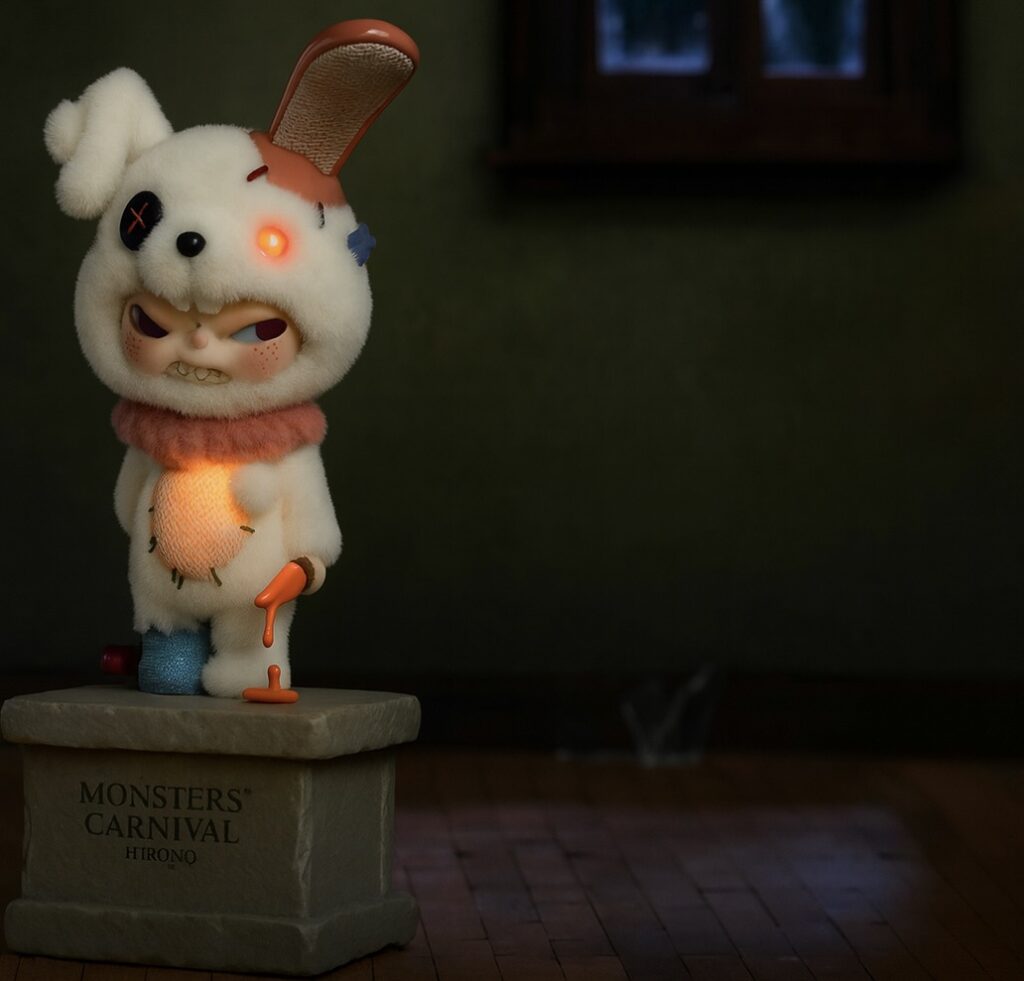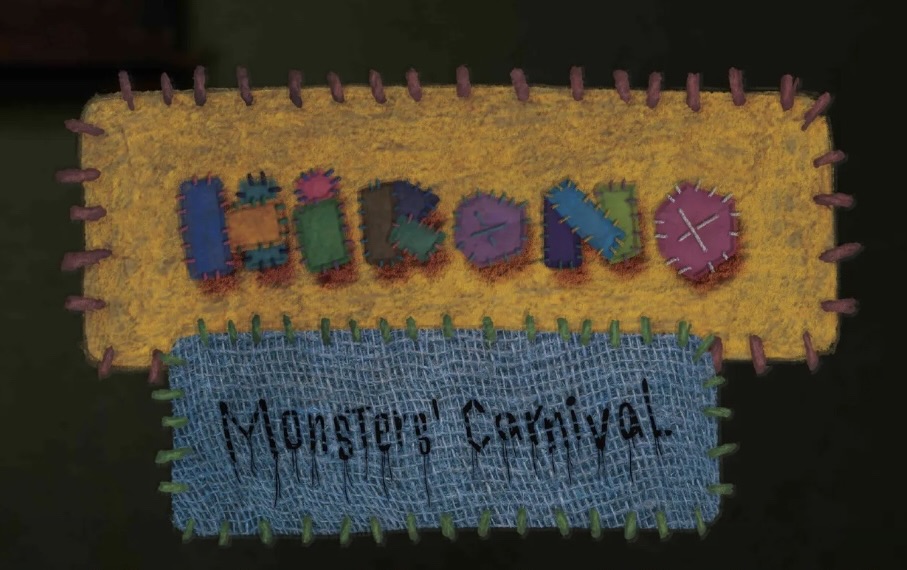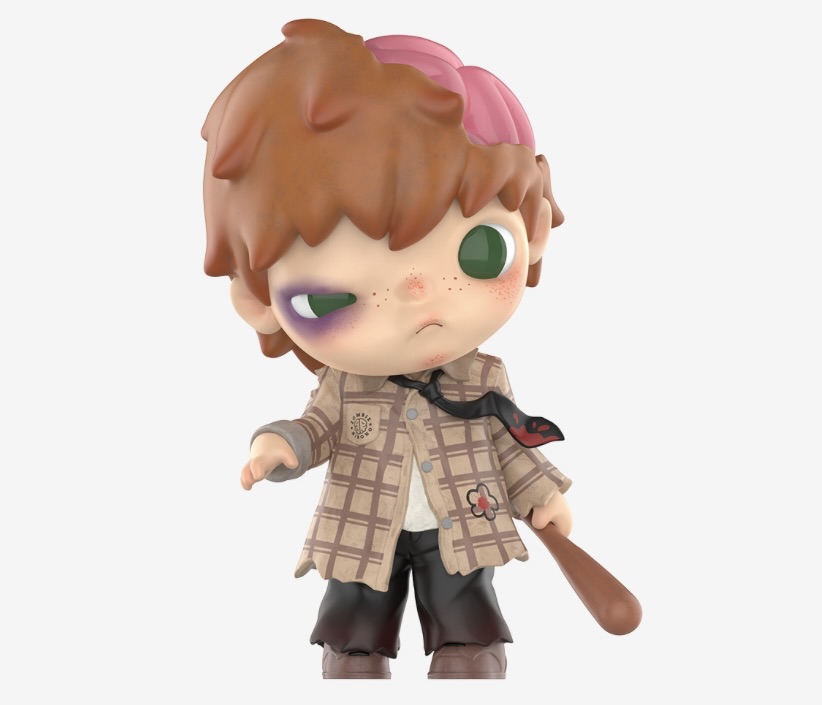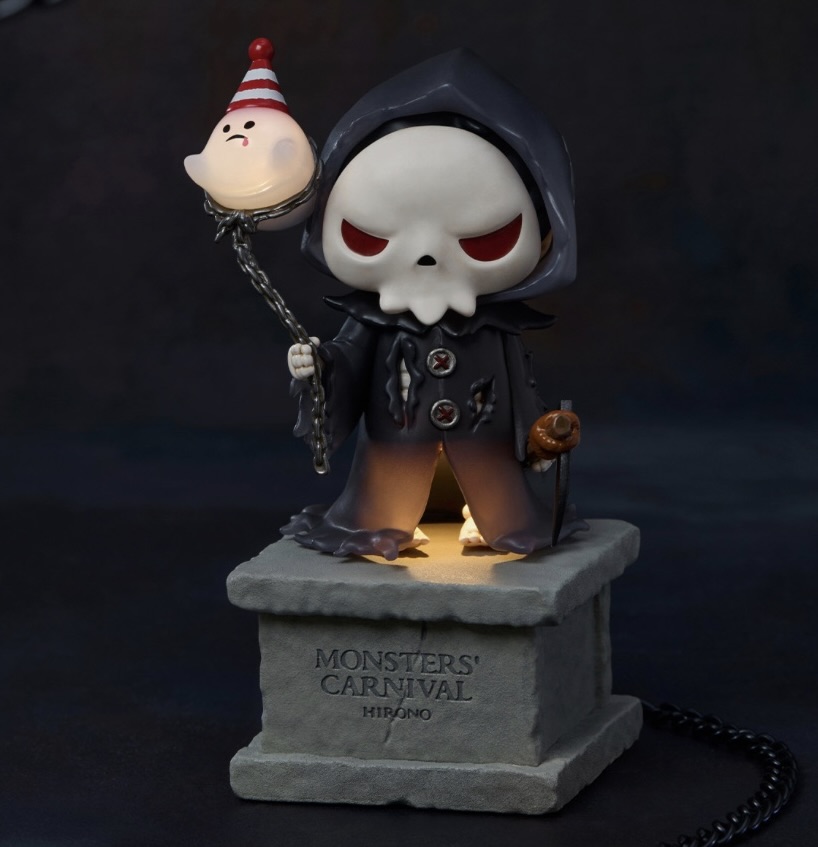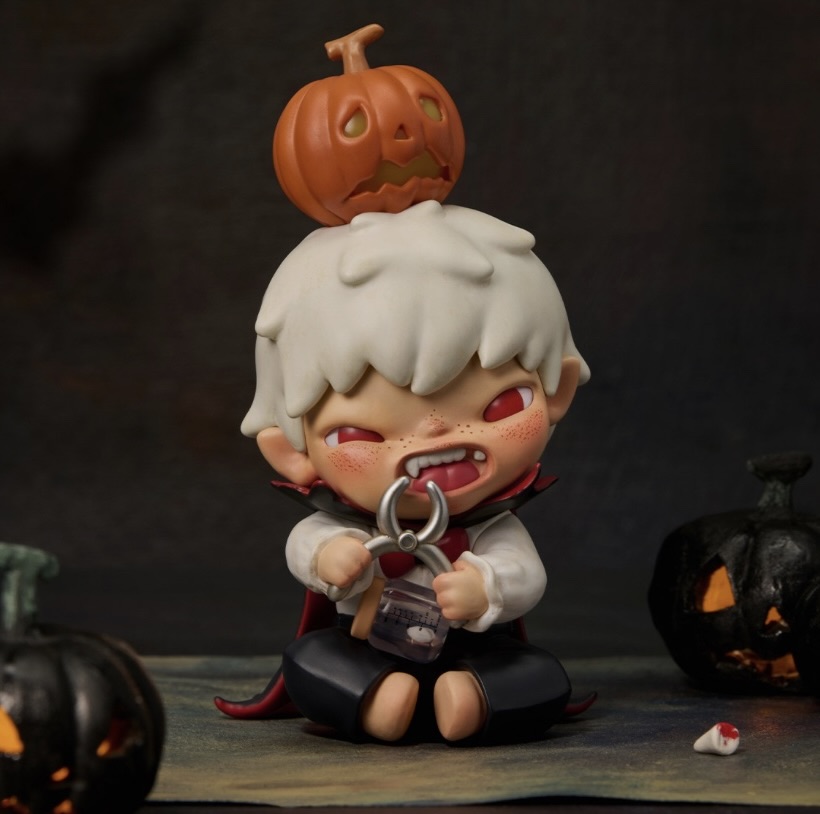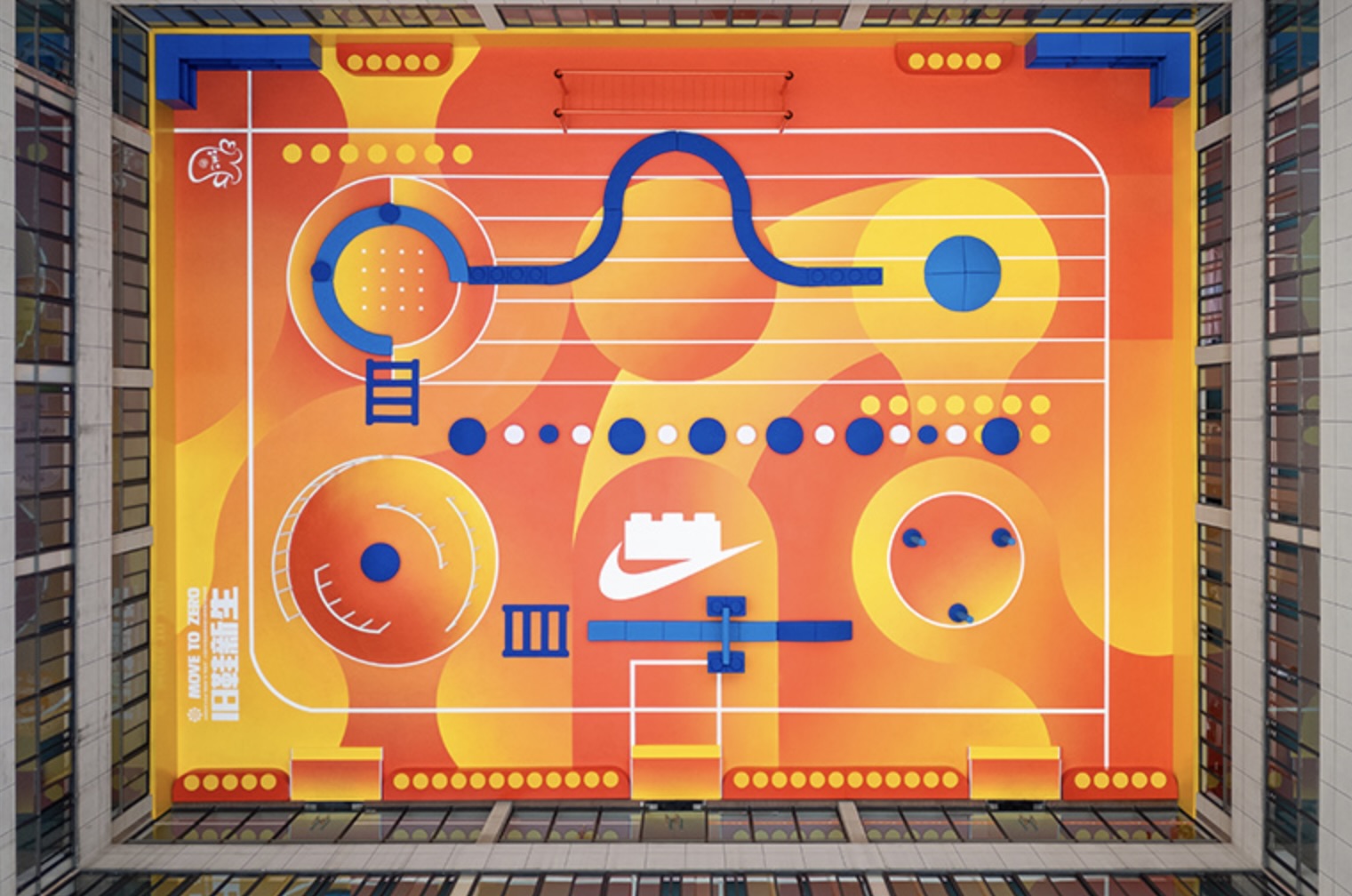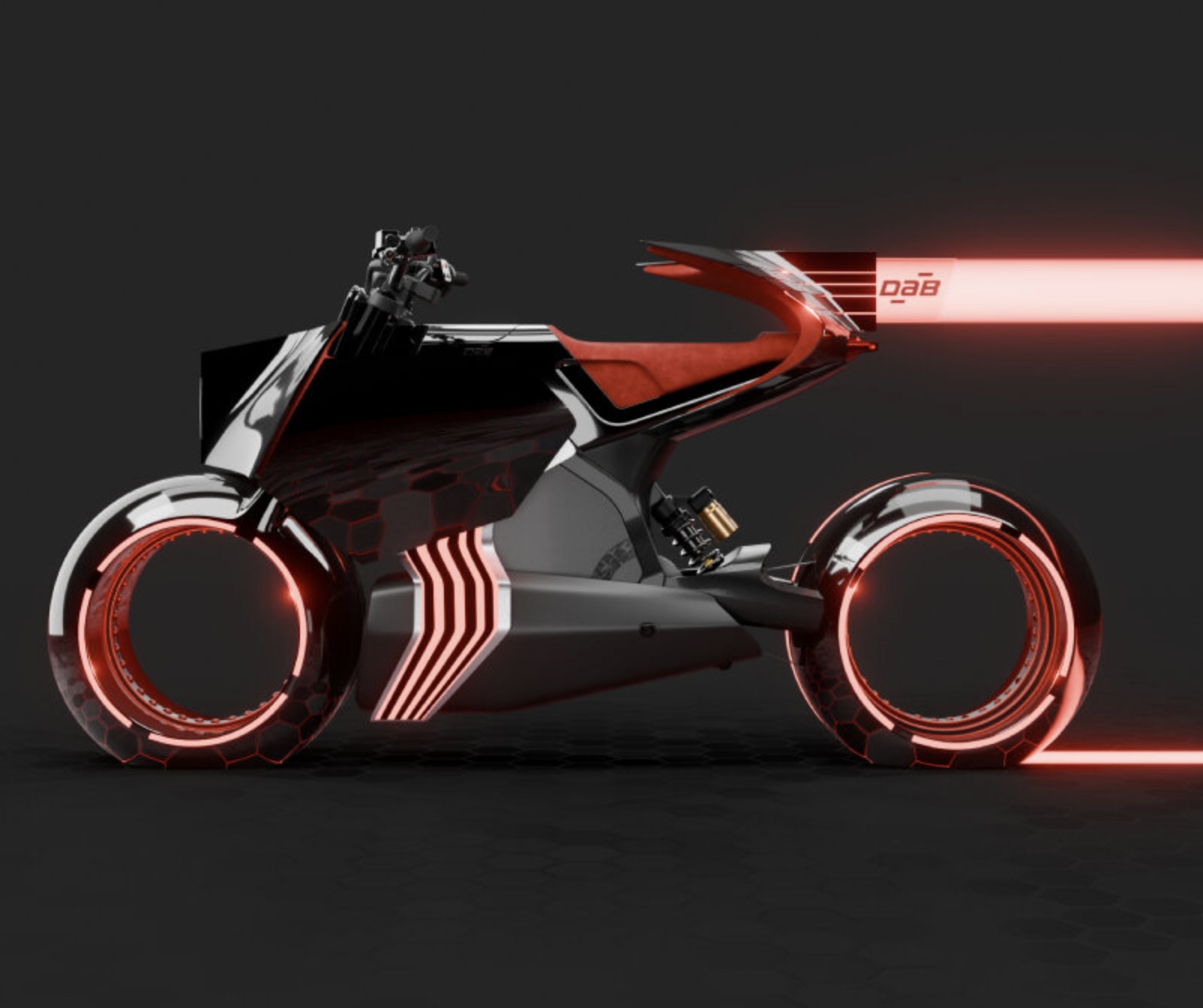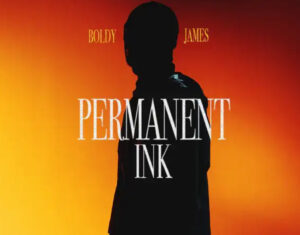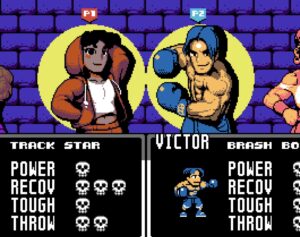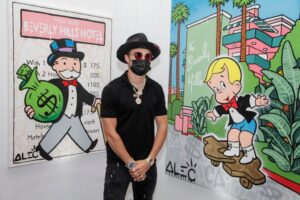Hirono’s Monsters’ Carnival series transforms the innocence of childhood toys into something darker and more introspective. These vinyl figures are not simply collectibles—they are sculptural stories about fear, loneliness, and transformation. Each piece feels alive, trapped between dream and nightmare, crafted with a tenderness that elevates them beyond plastic into emotional art.
At first glance, Monsters’ Carnival looks like a playful lineup of costumed creatures. But look closer, and the sweetness curdles into melancholy. Their stitched bellies, glowing eyes, and fragile postures speak of toys that once belonged to someone—forgotten, mended, and brought back to life. Hirono’s design language pulls from both Japanese and Western influences, combining the eerie charm of Tim Burton with the quiet sadness of Japanese soft vinyl artistry.
The Bunny, The Reaper, and The Child Within
Among the cast, the fuzzy bunny figure stands as a symbol of twisted innocence. Clad in a tattered rabbit costume with one glowing red eye and a dripping hammer in hand, it’s both adorable and unsettling. The figure’s fluffy texture and stitched belly contrast with its expression of rage and defiance—a visual metaphor for the fragility of youth.
Nearby, the Reaper Child holds a ghostly lantern. His skull mask and crimson eyes emit a soft glow that turns death itself into something almost compassionate. The illumination feels symbolic—a flicker of hope inside darkness, a reminder that even fear carries warmth.
Then there’s the vampire boy, a small creature caught mid-pout, gnawing on a jar of blood with a pumpkin perched on his head. His frustration feels human, his eyes teary rather than menacing. Like all of Hirono’s monsters, he reveals the vulnerability hidden inside the mask.
Handmade Horror and Tender Craft
The tactile beauty of Monsters’ Carnival lies in its craftsmanship. The flocked surfaces mimic the softness of worn plush toys, while LEDs embedded in the figures create glowing hearts and eyes that flicker with emotion. Each figure stands atop a pedestal engraved with “Monsters’ Carnival,” as if displayed in a traveling circus or museum of forgotten dreams.
The logo patch—a collage of mismatched stitches and crooked letters—captures the spirit of the collection perfectly. It feels imperfect, human, and hand-stitched with affection. These small design details reinforce the sense that every monster is a product of love, pain, and recovery.
View this post on Instagram
The Emotional Art of the Misfit
At its core, Monsters’ Carnival is about acceptance. These figures are not monsters in the traditional sense—they are emotional portraits of the misunderstood. Hirono uses cuteness as camouflage, inviting viewers to confront themes of trauma and resilience. The light that glows within them represents the childlike spark that survives, even in darkness.
Hirono’s world is one where broken toys become art, where softness and sorrow coexist. Monsters’ Carnival reminds us that the most haunting stories are often the gentlest ones—the kind that whisper, rather than scream, that imperfection is its own kind of beauty.
No comments yet.

